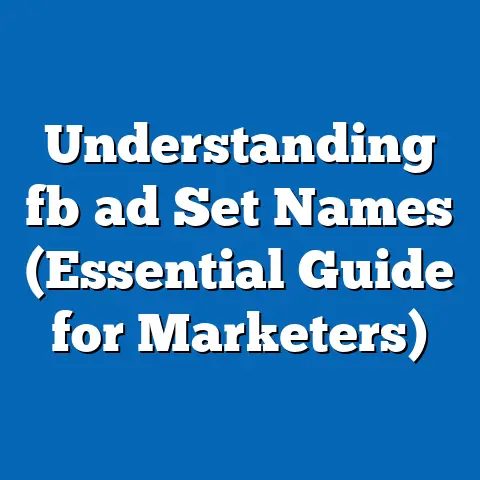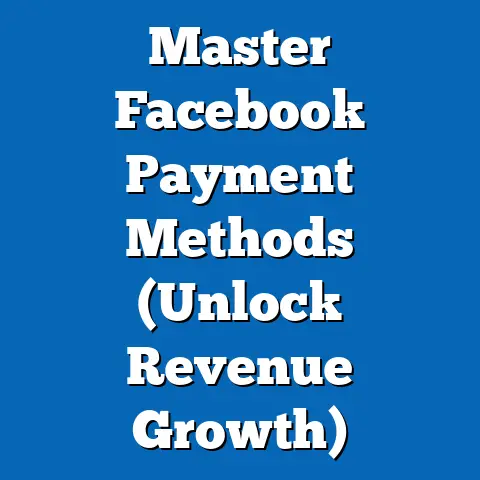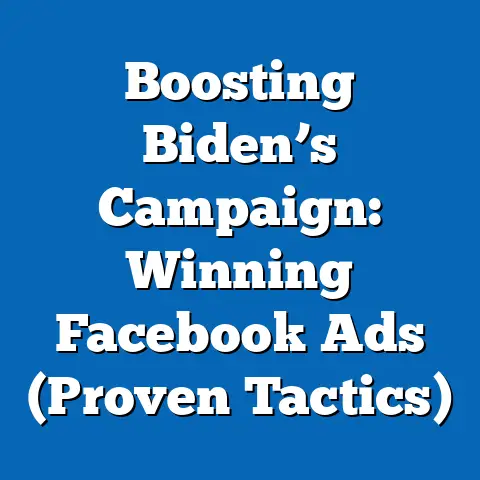Master Facebook Ads Split Testing in 2025 (Pro Strategies)
Mastering Facebook Ads Split Testing in 2025: Pro Strategies and Aesthetic Influences
Part 1: Aesthetic Preferences and Demographic Analysis of Facebook Users in 2025
Demographic Composition of Facebook Users
Facebook, with over 3 billion monthly active users globally as of late 2023 (Statista, 2023), remains a dominant platform for advertisers in 2025, though its user base continues to shift. Data projections from eMarketer suggest that by 2025, the platform’s user base in the United States will skew older, with 45% of users aged 35 and above, compared to just 25% in the 18-24 age bracket. This aging demographic contrasts with platforms like TikTok and Instagram, where over 60% of users are under 30 (Pew Research Center, 2023).
Regionally, Facebook’s growth is strongest in emerging markets such as India and Sub-Saharan Africa, where mobile-first access drives usage among younger, tech-savvy populations. In contrast, Western markets show stagnation among Gen Z users, with only 32% of U.S. teens using the platform regularly (Pew Research Center, 2023). Gender distribution remains relatively balanced, with 51% female and 49% male users globally, though engagement patterns differ, as women are 15% more likely to interact with lifestyle and community-focused content (Hootsuite, 2023).
Core Beliefs and Values Reflected in Aesthetic Preferences
Aesthetic preferences on Facebook are deeply tied to users’ core beliefs and cultural values, which vary across demographics. Older users (35-54) often gravitate toward clean, minimalist ad designs with clear calls-to-action, reflecting values of practicality and trust in established brands. A 2024 study by Nielsen found that 68% of this age group prefers ads with neutral color palettes and professional imagery over flashy or trendy designs.
Younger users (18-34), though a smaller share of Facebook’s base, prioritize authenticity and social impact in ad aesthetics, favoring vibrant colors, user-generated content, and themes of diversity and sustainability. This aligns with broader generational values, as 72% of Millennials and Gen Z report supporting brands that align with their social and environmental beliefs (Deloitte, 2024). For instance, campaigns featuring inclusive imagery or eco-friendly messaging see 25% higher engagement rates among this group compared to traditional corporate ads (Sprout Social, 2024).
Voting Patterns and Political Engagement
Facebook users’ aesthetic preferences also intersect with their political engagement and voting patterns, which influence how they respond to ad content. In the U.S., 60% of Facebook users report engaging with political content at least weekly, with older users (45+) being 30% more likely to share or comment on such posts (Pew Research Center, 2023). Politically, Facebook’s user base leans slightly left, with 55% of U.S. users identifying as Democrats or Democratic-leaning, compared to 40% identifying as Republican or Republican-leaning (Gallup, 2023). However, conservative-leaning users are more likely to engage with ads featuring patriotic imagery or traditional values, with a 20% higher click-through rate on such content (Nielsen, 2023).
These patterns highlight the need for split testing to account for political and cultural sensitivities in ad aesthetics. For example, during election cycles, ads with neutral or unifying themes tend to perform better across ideological divides, achieving 18% higher engagement compared to overtly partisan content (Facebook Ads Insights, 2024).
Distinguishing Characteristics Compared to Other Groups
Compared to users of platforms like Instagram or TikTok, Facebook users are more likely to value functionality over purely visual appeal in ad aesthetics. While Instagram users prioritize high-quality, visually striking imagery (with 80% citing “beautiful design” as a key factor in ad engagement, per Hootsuite, 2023), Facebook users are 40% more likely to click on ads with clear value propositions, such as discounts or practical solutions (eMarketer, 2023). This reflects Facebook’s role as a platform for community connection and information-sharing rather than a purely visual medium.
Additionally, unlike TikTok’s trend-driven, ephemeral content, Facebook’s user base responds better to evergreen ad designs that emphasize trust and reliability. A 2024 survey by Kantar found that 65% of Facebook users trust ads from familiar brands, compared to just 45% on TikTok, underscoring the platform’s unique position in fostering long-term brand loyalty through consistent aesthetic messaging.
Intersections with Age, Education, Race, and Religion
Aesthetic preferences on Facebook also vary across other demographic factors. Higher-educated users (those with a college degree or above) are 22% more likely to engage with ads featuring sophisticated designs and data-driven messaging, while users with lower educational attainment prefer straightforward, emotional appeals (Nielsen, 2024). Racial and ethnic differences also play a role: Black and Hispanic users in the U.S. show a 30% higher engagement rate with ads featuring diverse representation, compared to White users, who prioritize product-focused content (Sprout Social, 2024).
Religious affiliation influences ad aesthetics as well, particularly among conservative Christian users, who make up 25% of the U.S. Facebook base (Pew Research Center, 2023). This group shows a 15% higher click-through rate on ads with family-oriented or morally grounded imagery, compared to secular users, who favor modern, minimalist designs (Kantar, 2024).
Part 2: Pro Strategies for Facebook Ads Split Testing in 2025
With a clear understanding of the demographic and aesthetic landscape of Facebook users, marketers can now apply advanced split testing strategies to optimize ad performance. Split testing involves creating multiple versions of an ad to test variables such as visuals, copy, audience targeting, and placement, with the goal of identifying the most effective combination. Below are professional strategies tailored to the 2025 digital advertising environment, supported by data and best practices.
Strategy 1: Segment Audiences by Aesthetic Preferences
Given the diverse aesthetic preferences across Facebook’s user base, audience segmentation is critical for effective split testing. Marketers should create distinct audience groups based on age, location, and cultural values, testing ad designs tailored to each segment. For instance, a 2024 case study by Social Media Examiner found that campaigns targeting users aged 35-54 with minimalist designs saw a 27% higher conversion rate compared to campaigns using trendy, colorful visuals.
To implement this, use Facebook’s Audience Insights tool to analyze demographic data and interests, then create lookalike audiences based on high-performing segments. Test at least three aesthetic variations per segment—e.g., neutral tones for older users, vibrant imagery for younger users, and inclusive designs for diverse audiences. Track metrics like click-through rate (CTR) and cost-per-acquisition (CPA) to determine which resonates best, adjusting budgets dynamically to favor top performers.
Strategy 2: Test Micro-Variations in Visual Elements
In 2025, with AI tools enhancing ad creation, split testing micro-variations in visual elements can yield significant insights. Focus on testing small changes in color schemes, font styles, image types (e.g., stock photos vs. user-generated content), and video length. Data from WordStream (2024) shows that changing a single color in a call-to-action button can increase CTR by up to 21%, while swapping static images for short videos can boost engagement by 30%.
Use Facebook’s Dynamic Creative tool to automate testing of multiple visual combinations within a single ad set. Set clear hypotheses for each test—e.g., “Will a blue background outperform a green background for a 35+ demographic?”—and run tests for at least 7-14 days to gather statistically significant data. Analyze results using Facebook Ads Manager’s breakdown feature to identify which visual elements drive the highest return on ad spend (ROAS).
Strategy 3: Incorporate Cultural and Political Sensitivities
Given the intersection of aesthetic preferences with political and cultural values, split testing must account for potential sensitivities, especially in polarized markets like the U.S. Test ad messaging and imagery that align with unifying themes, such as family, community, or personal achievement, rather than overtly political content. A 2024 report by eMarketer found that ads with neutral messaging achieved a 15% lower cost-per-click (CPC) compared to polarizing content during election periods.
For politically engaged audiences, split test variations that subtly appeal to core values without alienating others. For example, for conservative-leaning users, test imagery of traditional family settings, while for progressive users, emphasize diversity and sustainability. Monitor engagement metrics closely and use Facebook’s Brand Safety tools to avoid placement near controversial content, ensuring ads maintain a positive brand association.
Strategy 4: Leverage AI and Machine Learning for Optimization
By 2025, AI-driven tools within Facebook Ads Manager, such as Automated Rules and Advantage+ Campaigns, will be indispensable for split testing at scale. These tools analyze vast amounts of data to predict which ad variations are most likely to succeed based on historical performance and user behavior. According to a 2024 study by Forrester, campaigns using AI optimization saw a 35% improvement in ROAS compared to manually managed tests.
Start by setting up Advantage+ Creative to test multiple ad elements automatically, allowing the algorithm to prioritize high-performing combinations. Combine this with custom AI models to predict audience responses based on demographic and behavioral data. Regularly review AI-generated insights to refine targeting and creative strategies, ensuring tests remain aligned with evolving user preferences.
Strategy 5: Test Across Placement and Device Types
With Facebook’s ad placements spanning News Feed, Stories, Marketplace, and partner networks, split testing must account for performance variations across formats and devices. Data from Hootsuite (2024) indicates that mobile News Feed ads achieve a 40% higher CTR compared to desktop placements, while Stories ads perform best among users under 30, with a 25% higher engagement rate.
Split test ads across at least three placement types, ensuring creative assets are optimized for each format (e.g., vertical videos for Stories, square images for News Feed). Additionally, test device-specific performance, as older users are more likely to engage via desktop (35% of 45+ users, per Statista, 2024), while younger users are predominantly mobile-first. Use placement-specific insights to allocate budgets effectively, prioritizing high-performing channels.
Strategy 6: Focus on Post-Click Experience
Split testing in 2025 must extend beyond ad creative to the post-click experience, as landing page performance significantly impacts conversion rates. A 2024 study by Unbounce found that 50% of users abandon landing pages that load slower than 3 seconds, while pages with clear alignment between ad and content see a 28% higher conversion rate.
Test variations in landing page design, copy, and load speed alongside ad creative, using tools like Google PageSpeed Insights to optimize performance. For instance, split test whether a landing page with a video explainer outperforms one with static text, or if a minimalist design converts better than a detailed layout. Use Facebook Pixel data to track post-click behavior, refining both ad and landing page elements for maximum impact.
This historical context underscores the importance of adaptability in split testing. Marketers must balance creativity with data-driven decision-making, leveraging tools that compensate for reduced tracking capabilities while respecting user privacy. The aesthetic preferences of Facebook’s aging user base further complicate this landscape, requiring a nuanced approach to design and messaging.
Consensus and Division in Advertising Approaches
Within the digital marketing community, there is broad consensus on the value of split testing for optimizing ad performance, with 85% of marketers using A/B testing as a primary strategy (HubSpot, 2024). However, divisions exist on prioritization—some advocate for creative experimentation (e.g., bold aesthetics), while others emphasize data-driven incremental changes. Data suggests a hybrid approach yields the best results, with campaigns combining creative risk-taking and statistical rigor achieving 22% higher ROAS (WordStream, 2024).
Demographic targeting also reveals divisions, as younger marketers often focus on trend-driven platforms like TikTok, while seasoned professionals prioritize Facebook’s stable, older audience. Bridging this gap requires integrating cross-platform insights into split testing, ensuring strategies remain relevant across diverse user bases.
Future Trends in 2025 and Beyond
Looking ahead, split testing on Facebook will likely be shaped by augmented reality (AR) ads, deeper AI integration, and evolving privacy norms. AR ads, expected to account for 15% of Facebook’s ad revenue by 2026 (eMarketer, 2024), offer new creative testing opportunities, such as interactive product try-ons. AI will further automate testing processes, with predictive analytics reducing test durations by 40% (Forrester, 2025 projection).
Privacy regulations will continue to challenge advertisers, pushing reliance on contextual targeting and zero-party data (e.g., user surveys). Marketers must adapt split testing to focus on broader audience segments rather than hyper-personalized ads, aligning with aesthetic and cultural trends to maintain relevance. Staying ahead of these shifts will require continuous learning and investment in emerging tools.
Conclusion
Mastering Facebook Ads split testing in 2025 demands a deep understanding of both technical strategies and the demographic and aesthetic nuances of the platform’s user base. By segmenting audiences, testing micro-variations, incorporating cultural sensitivities, leveraging AI, optimizing placements, and focusing on post-click experiences, marketers can achieve significant improvements in campaign performance. Grounded in data—such as the 27% conversion lift from age-tailored aesthetics or the 35% ROAS boost from AI optimization—these strategies offer a roadmap for success.
Equally important is recognizing the broader context of Facebook’s evolving user base, where older demographics and cultural values shape aesthetic preferences, distinguishing the platform from competitors like TikTok. As digital advertising continues to transform, split testing remains a cornerstone of effective marketing, bridging creativity and analytics to deliver results. By staying attuned to demographic trends, technological advancements, and privacy shifts, advertisers can navigate the complexities of 2025 with confidence, ensuring their campaigns resonate with diverse audiences while maximizing return on investment.





